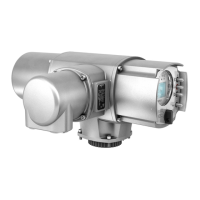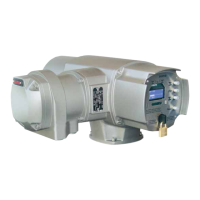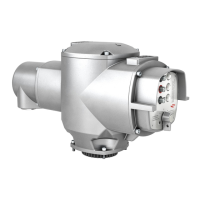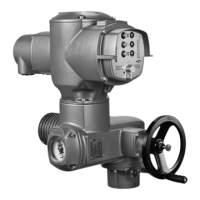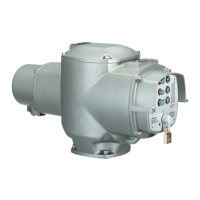Setting values:
No signal
Behaviour A: "Off", intermediate position is not signalled.
C________|¯¯¯¯¯¯¯¯O
Behaviour B: Signal is active from reaching the pivot point (P) up to end position
OPEN (100 %)
C¯¯¯¯¯¯¯¯¯|_______O
Behaviour C: Signal is active from end position CLOSED (0 %) until reaching the
pivot point (P).
C_______|¯|_______O
Behaviour D: When passing the pivot point (P), a pulse signal is issued.
Figure 37: Signal behaviour (A to D) of the intermediate positions
Special characteristics of B, C and D
Behaviour of B and C:The signal is directly activated when reaching the set pivot
point (P).
Behaviour D: The signal is activated shortly before reaching the set pivot point (P).
The switch-on point is determined by pulse duration (+/– range around the pivot
point). Pulse duration depends on parameter Outer dead band M0148 and amounts
to 1.0 % of the travel for default setting.
Information
For behaviours B and C, the signal might be omitted if, e.g when using a positioner,
pivot point (P) is not fully reached due to the dead band. In this case, behaviour D
can be selected as the dead band is considered.
8.2.3. Hysteresis for intermediate positions: set
The hysteresis determines the tripping point of the signal.
Example
Parameter Pivot point 6 M0253 is set to 50.0 % of the travel.
Parameter Hysteresis 6 M0282 is set to 1.0 %.
49
Actuator controls
ACV 01.2/ACVExC 01.2 Application functions
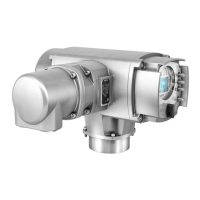
